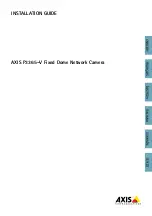
1-3
Enhanced neighbor discovery mechanism
The IPv6 neighbor discovery protocol is implemented through a group of Internet Control Message
Protocol Version 6 (ICMPv6) messages that manage the information exchange between neighbor
nodes on the same link. The group of ICMPv6 messages takes the place of Address Resolution
Protocol (ARP) messages, Internet Control Message Protocol version 4 (ICMPv4) router discovery
messages, and ICMPv4 redirection messages and provides a series of other functions.
Flexible extension headers
IPv6 cancels the Options field in the IPv4 header but introduces multiple extension headers to provide
scalability while improving efficiency. The Options field contains 40 bytes at most, while the size of IPv6
extension headers is restricted to the maximum size of IPv6 packets.
Introduction to IPv6 Address
IPv6 address format
An IPv6 address is represented as a set of 16-bit hexadecimals, separated by colons. An IPv6 address
is divided into eight groups, and the 16 bits of each group are represented by four hexadecimal
numbers, for example, 2001:0000:130F:0000:0000:09C0:876A:130B.
To simplify the representation of IPv6 addresses, zeros in IPv6 addresses can be handled as follows:
z
Leading zeros in each group can be removed. For example, the above-mentioned address can be
represented in a shorter format as 2001:0:130F:0:0:9C0:876A:130B.
z
If an IPv6 address contains two or more consecutive groups of zeros, they can be replaced by a
double-colon ::. For example, the above-mentioned address can be represented in the shortest
format as 2001:0:130F::9C0:876A:130B.
A double-colon can be used only once in an IPv6 address. Otherwise, the device is unable to determine
how many zeros that double-colons represent when converting them to zeros to restore a 128-bit IPv6
address.
An IPv6 address consists of two parts: address prefix and interface ID. The address prefix and the
interface ID are respectively equivalent to the network ID and the host ID in an IPv4 address.
An IPv6 address prefix is written in IPv6-address/prefix-length notation, where the IPv6-address is in
any of the notations above mentioned, and prefix-length is a decimal number indicating how many bits
from the left-most of an IPv6 address is the address prefix.
IPv6 address classification
IPv6 addresses fall into three types: unicast address, multicast address, and anycast address.
z
Unicast address: An identifier for a single interface, similar to an IPv4 unicast address. A packet
sent to a unicast address is delivered to the interface identified by that address.
z
Multicast address: An identifier for a set of interfaces (typically belonging to different nodes), similar
to an IPv4 multicast address. A packet sent to a multicast address is delivered to all interfaces
identified by that address.















































